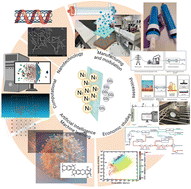Near‐Infrared Imaging Agent ABSi‐148 Alleviates CA IX‐Mediated Hypoxic Fibrosis in Inflammation‐Cancer Transition
Advanced Healthcare Materials, Volume 14, Issue 11, April 25, 2025.

This study introduces ABSi-148, a near-infrared (NIR) theranostic agent targeting hypoxia-driven carbonic anhydrase IX (CA IX) in pancreatic ductal adenocarcinoma (PDAC). ABSi-148 enables real-time visualization of early pancreatic lesions and suppresses fibrosis during inflammation-to-cancer transition. In vivo, it enhances survival in genetic PDAC models and localizes hypoxic tumor regions, offering dual diagnostic and therapeutic potential for precision oncology.
Abstract
Pancreatic ductal adenocarcinoma (PDAC) remains a formidable challenge due to its late diagnosis and intrinsic treatment resistance, exacerbates by its development from chronic inflammation to cancer transition (ICT). Here, this investigation aims to develop and evaluate ABSi-148, a novel near-infrared (NIR) agent targeting hypoxic carbonic anhydrase IX (CA IX), for its potential applications in ICT imaging and even PDAC treatment. ABSi-148 is synthesized from 4-(2-Aminoethyl) benzene sulfonamide (ABS), a sulfonamide derivative, conjugating with MHI-148 dye with merits of exceptional NIR-emitting traits, high biocompatibility, and deep tissue penetration imaging capability. It selectively accumulates in CoCl2-induced pancreatic stellate cells and pancreatic cancer cells via binding with transmembrane CA IX in vitro. Meanwhile, ABSi-148 effectively visualizes the early pancreatic lesion, and its long-term administration inhibits the progression of hypoxia-related fibrosis involved in pancreatic intraepithelial neoplasias (PanINs), and even PDAC progression in vivo. Besides, ABSi-148 monitors treatment efficacy and localizes hypoxic tumor regions, enhancing survival in tamoxifen combined with caerulein-induced KPC mice. Overall, ABSi-148 emerges as a theranostic NIR agent for precise diagnosis and targeted therapy in ICT of PDAC, promising to alleviate tumor progression and enhancing outcomes.



















































































































































